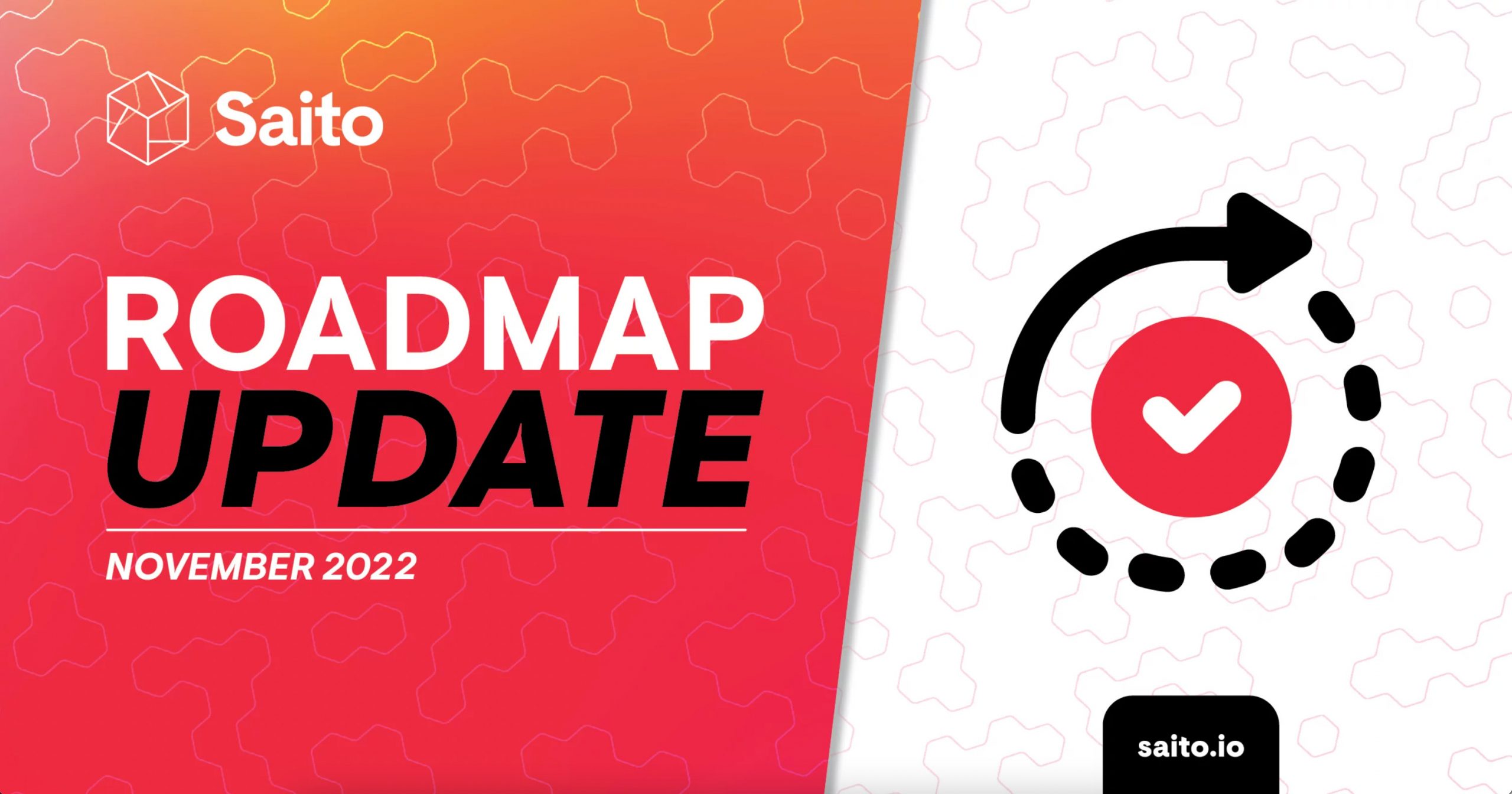Dawn of Persistence – Roadmap Update
This is a quick update on the state of Saito Network development. In order to save time, this update assumes its readers are familiar with the Saito network and our existing roadmap.
Organization:
Our core team has seven developers and two non-technical staff. We have funding for more than two years without further token sales in the event of a prolonged bear market.
We are seeking marketing help, but need someone who understands Saito. Before we find an on-team marketing genius, we’ve shifted to releasing features as they develop rather than planning marketing activities. We think this approach plays to our strengths.
Front-End Development:
Our transaction volume is dominated by gaming applications but chat and social media usage is growing. Our development focus is on improving the Saito Arcade and Red Square.
We are aware of the limitations of these applications and are putting effort into fixing them. We are systematizing components so that common behaviors trigger consistent responses, and working on ways to make it easier for people to participate in group activities like tournaments and leagues. We also have longer-term games and projects under development.
Short-term priorities include browser-to-browser connections for off-chain transaction exchanges, a digital-rights-management module for electronic gaming, and several new applications and games we have previously discussed. A more long-term focus is a platform re-write to simplify the developer SDK.
Rust Client and Token Persistence
Our Rust team has remained focused on our WASM client, a version of Saito able to compile directly into user browsers as well as run on many other devices. This is our long-term platform intended to eventually replace our existing javascript frontend. We are happy to confirm the Rust (WASM) client is active on the Saito network.
We want this client to have at least six months of experience running in a live environment before we use it to maintain token integrity across network resets in a live network with ATR rebroadcasting. In the meantime, our Rust team will work on a variety of improvements intended to increase performance and improve security in low fee-throughput situations. We will publish details on consensus-level proposals over the next four month and continue to welcome feedback and suggestions on mechanism design.
This timeline puts the launch of token persistence in eight months: summer 2023. Token persistence will start by offering guarantees for large on-chain deposits (500k SAITO or more) and gradually lower the reaping threshold as software and network stability permits. We expect it to take approximately a year to reduce the threshold to levels needed for common commercial transactions.
Tokenomics and Staking
The introduction of on-chain token permanence will see an additional ~11mm early bird SAITO tokens enter circulation. We are otherwise reluctant to expand issuance without evidence that doing so will drive growth.
One possible exception — we may introduce a staking subsidy from the network treasury to cover rebroadcasting fees for users who migrate their tokens on-chain in the event that rebroadcasting fees are greater than rebroadcasting income during this period after token persistence is added but before the advertising faucet is generating network revenue. The community should not expect DeFi games with incentivized lock-ups and APY guarantees: we believe those who earn UTXO payouts should be incentivized to promote network usage.
Front-end work on the advertising faucet will commence after token persistence begins, likely around ten months out. We will use the high reaping threshold to experiment with small-value issuance without the risk of such issuance triggering monetary inflation while the faucet matures. As our reaping threshold falls the most popular applications and routing nodes will gradually be able to accrue income.
Exchanges:
We are happy to confirm we have listing offers from significant exchanges. With that said, these mostly involve invitations to give them non-trivial payments for the right to hand over even more significant allocations to dump on their users. There is a reason most exchange-listed tokens drop in price and we do not want to play that game.
We believe that Saito will grow into a premiere crypto-asset and that exchanges will ultimately list Saito on far better terms. Given this, as long as our token price and market cap is rising, we believe it hurts the interests of our community to pursue these opportunities, not to mention reduces the income trading generates daily for Saito holders via liquidity pools.
Saito also has many options to simply purchase that other networks to not. A low-fee crypto brokerage that runs within the Saito ecosystem and plugs directly into Red Square and the Saito Arcade is one idea we are considering, as it will expand trading support not only to our own token but for all partner tokens that can be stored in Saito wallets.
As such, we are punting on further listings activities until we have a full-time marketing hire who can handle these communications and remove the need for Richard and David to be involved in this outreach. We are assuming it will take approximately six months. If the situation changes and a listing becomes more desirable we can easily reverse course.
Third Party Nodes:
We are periodically asked when third parties can run nodes on the network. As per our existing roadmap, we will not push for that in this era as we expect this will slow not hasten network and software development.
With that said, if third parties wish to run transaction-generating infrastructure we will welcome them to participate once token persistence is active, provided they are willing to work with us on scheduled network upgrades.
Summary:
This gives us roughly a year-and-a-half of development work before we will be ready to move into the Third Era. The seminal moment will be the introduction of token persistence roughly halfway through this era.
We welcome feedback on these plans along with broader discussions of our strategic goals and choices moving forward.



